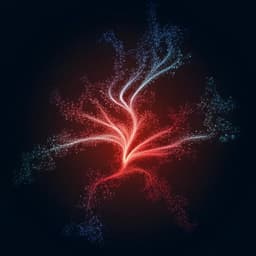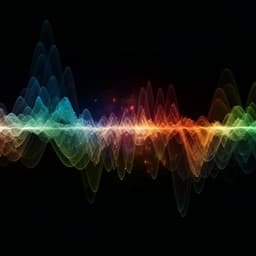
Computer Science
Consciousness is learning: predictive processing systems that learn by binding may perceive themselves as conscious
V. A. Aksyuk and V. Aksyuk
Explore the groundbreaking research by V A Aksyuk and Vladimir Aksyuk, as they delve into how predictive processing systems can achieve flexible generalization through the formation of working memories. This study connects the dots between machine learning, consciousness, and the evolution of perceptual value prediction, offering a perspective that could redefine our understanding of action policies.
Playback language: English
Introduction
Machine learning has made significant strides, with deep learning and reinforcement learning enabling machines to surpass human performance in complex tasks like chess and Go. However, these systems lack the efficiency of biological systems in learning online from few examples and generalizing across domains. Humans achieve this efficient learning through declarative memory formation, strongly associated with conscious information processing. Understanding the mechanisms underlying consciousness, therefore, is not only a crucial intellectual challenge but also holds the potential for revolutionary advancements in artificial intelligence.
The nature of consciousness has been intensely studied, with various theories attempting to explain its neural correlates and underlying mechanisms. While these theories offer valuable insights, they often focus on specific aspects of consciousness and lack a unifying framework. An ideal theory would integrate consciousness seamlessly with other cognitive functions, such as attention, affect, learning, perception, and action, explaining the subjective experience and evolutionary advantages conferred by such a system. The authors posit that consciousness is fundamentally linked to efficient and general learning, and that declarative learning, a key aspect of this, is inherently tied to consciousness itself. Declarative learning, which occurs through working memory, is directly related to conscious experience; we remember what we are conscious of. This strong connection between consciousness and learning has been recognized by several theories of consciousness, often highlighting dynamic binding of perceptual features to represent novel objects and linking consciousness to recurrent processing and learning.
Literature Review
The paper reviews several prominent theories of consciousness (ToCs), noting their incongruence and lack of a unifying paradigm. These ToCs, while offering valuable insights, often focus on specific aspects. The authors highlight existing research on predictive processing (PP), recurrent processing, global workspace theory, and higher-order theories of consciousness, emphasizing the need for a comprehensive framework that integrates these disparate perspectives. The relationship between consciousness, learning, and dynamic binding of perceptual features is discussed, drawing connections to recurrent processing theory and the role of dynamic connections between perceptual features in representing novel compound objects. The paper points out the limitations of existing machine learning algorithms in efficiently generalizing and learning from few examples, contrasting them with the human ability facilitated by declarative memory and consciousness.
Methodology
The paper proposes a conceptual model for a conscious agent as a learning system combining predictive processing (PP), feature binding, and reinforcement learning (RL). The system continuously posits and tests perceptual hypotheses by introducing new causes that minimize prediction errors, seeking common hidden causes that bind these inferences. These bound perceptual features constitute the system's conscious contents, and the process of hypothesis generation is equated with 'being conscious'.
The PP framework is detailed, describing a hierarchical architecture where causes predict features down to sensory data, with prediction errors dynamically updating the inferred likelihoods of higher-level causes. Conventional PP learning adjusts prediction strengths to minimize errors. The novel contribution is a learning-by-binding mechanism which posits that coincident, significant prediction errors lacking a known common cause indicate a new cause, temporarily added to the model. This new cause, if repeatedly inferred, becomes a permanent part of the model (long-term memory), otherwise it is discarded (forgotten).
The binding process is described as hierarchical, with multiple groups of prediction errors simultaneously bound into new causes. This creates unified episodic descriptions of the present moment accessible by associative recall. The authors discuss how this process explains various phenomena associated with consciousness, such as masking, postdictive perceptual integration, and the apparent discreteness of conscious perception in time. Specific examples illustrate how hierarchical binding creates unified objects (e.g., 'The Car'), and how these objects become available for a wide range of actions via a global workspace-like mechanism. The role of selective attention in maintaining objects in working memory is explained as a learned action modifying the system's likelihood estimates.
The model expands to include action learning and optimization using temporal difference reinforcement learning (TDRL). Multiple reward mechanisms, implicitly encoded via internal reward signals, contribute to estimating the future value of the current state. Learning-by-binding modifies the action policy by creating links between perceptions and actions, forming declarative action memories subject to RL rules. This process is proposed to achieve sample-efficient, generalizable, and incremental online learning, currently lacking in artificial agents. Active inference is adapted to represent actions and perceptions within the same categorical PP model, with actions manifesting as selective attention, imagination, and motor execution.
Key Findings
The paper's central finding is a functional model of consciousness based on a combination of predictive processing (PP), learning-by-binding, and reinforcement learning (RL). This model proposes that consciousness arises from a system's ability to efficiently learn and generalize from few examples, forming declarative memories and achieving flexible adaptation in novel situations. Several key aspects are highlighted:
* **Unified Episodic Memory:** The learning-by-binding mechanism leads to the formation of unified episodic memories that are associatively recallable. This explains the unified yet differentiated nature of conscious experience.
* **Global Workspace:** The binding process creates a global workspace where bound perceptual features can influence a wide range of actions, facilitating flexible generalization and adaptive behavior.
* **Working Memory:** Working memory is explained as a consequence of binding and the learned action of selective attention, which maintains object representations even in the absence of sensory input.
* **Higher-Order Perceptions:** The system learns to infer higher-order causes representing its own perceptual processes, including the experience of perceiving itself and a sense of self. This accounts for the subjective quality of experience.
* **Temporal Dynamics:** The binding timescale and other hyperparameters explain the apparent discreteness of conscious perception in time and relate to the observed postdictive effects.
* **Reinforcement Learning of Action:** Temporal difference reinforcement learning (TDRL) guides action learning, optimizing actions for gene proliferation and multiple evolutionary strategies. The system learns to maximize future value by learning contingencies between past perceptions and rewards.
* **Conscious States:** The hyperparameters controlling various learning functions define the state of consciousness and are modulated by factors such as reward signals, attention, and the exploration-exploitation tradeoff.
* **Unconscious Processing:** The model accounts for unconscious processes as those that do not involve binding. This includes considerable aspects of perception and action which do not lead to forming recallable memories.
Discussion
The proposed model addresses several challenges in understanding consciousness, integrating disparate theories and providing a mechanistic explanation for various phenomena. The integration of PP, binding, and RL offers a comprehensive account of consciousness as an emergent property of a system capable of efficient declarative learning. The model provides a functional description that can be tested empirically, using numerical simulations and neurobiological studies. The model accounts for both the content and state of consciousness, explaining how specific perceptual content enters consciousness and how global parameters modulate conscious states. The model addresses the hard problem of consciousness by proposing that the subjective experience arises from the system's ability to learn and represent higher-order perceptions of its own internal states, including the experience of perceiving itself. The discussion highlights the importance of distinguishing between procedural and perceptual knowledge, arguing that the model can explain the limitations of scientific knowledge to fully account for the subjective experience.
Conclusion
This paper presents a novel theoretical framework for understanding consciousness based on predictive processing, learning-by-binding, and reinforcement learning. This model integrates several existing theories and offers testable predictions. Future research should focus on developing numerical models and conducting empirical studies to validate the model's predictions. This includes investigating the specific neural mechanisms underlying the proposed functional components, examining the role of various neurotransmitters in modulating conscious states, and studying the ethical implications of creating artificial systems with consciousness.
Limitations
The current model is primarily conceptual and lacks a fully detailed mathematical formulation. Empirical validation through numerical simulations and neurobiological experiments is needed to confirm the model's predictions. The specific details of neural implementation remain to be elucidated, and the exploration-exploitation tradeoff within the model needs further refinement. The ethical considerations surrounding the development of artificial conscious systems require extensive discussion and guidelines.
Related Publications
Explore these studies to deepen your understanding of the subject.







